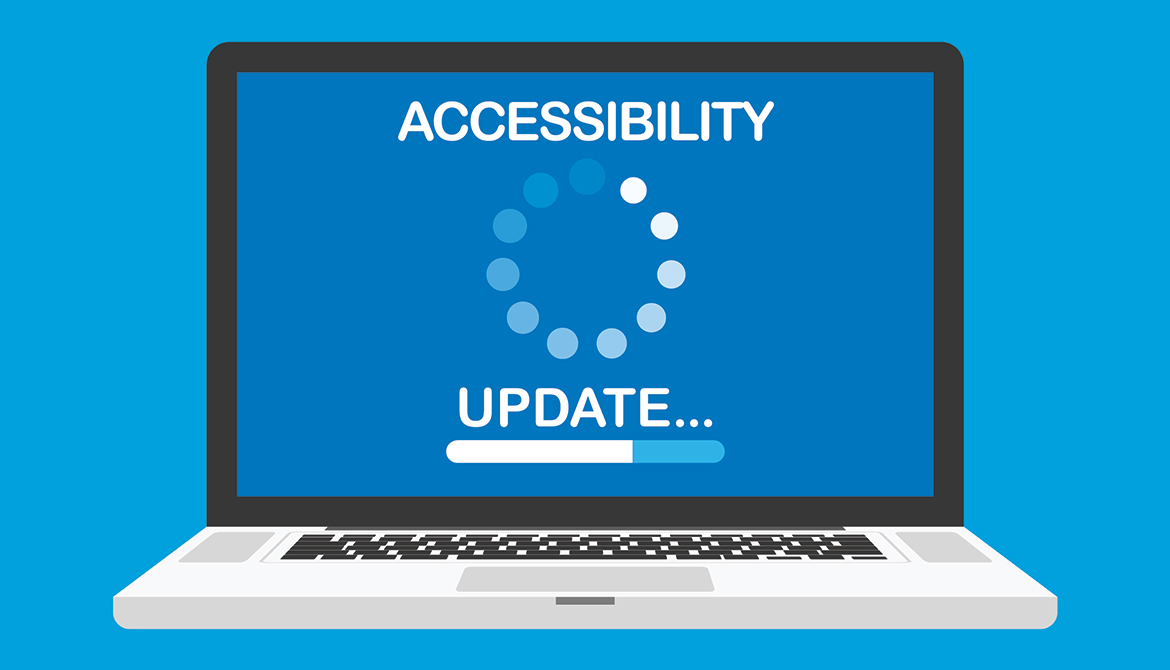3 minutes
How to leverage the Web Content Accessibility Guidelines 2.0 to help make sure your website is ready to serve every one of your members
This article was first published on kearley.com and is reprinted with permission. Read the original here.
If you work at or work with a credit union, chances are you’ve heard the words “ADA Guidelines.” Often, these words are accompanied by the groans of CEOs who know their website will need to be updated but are afraid of the time, resources and expense this will require.
A quick explanation: ADA Guidelines were originally written by the World Wide Web Consortium (or W3C) which is a private organization dedicated to developing web standards, including standards for accessibility. These standards from W3C were put into law as Section 508 of the American With Disabilities Act. Basically, the goal of these guidelines is to ensure that websites like yours are accessible for anyone with any disability.
Over the past couple of years, the focus has been on the latest iteration of W3C’s Web Content Accessibility Guidelines 2.0. But this summer, W3C released WCAG 2.1 with several additions to these guidelines. In this article, we’ll talk about what this means for your credit union and what you need to do to make sure your website is ready to serve every one of your members, any way they access it.
How Does WCAG 2.1 Affect ADA Guidelines?
Right now, ADA Guidelines remain the same. Section 508 won’t update immediately. According to Usablenet, it could take a couple of years for these recommendations from W3C to be approved and implemented into ADA Guidelines.
Current settlements won’t update either, unless the attorney on record preemptively included a provision regarding these changes. As Richard Hunt of HuntHuey Law puts it in the above blog post, “Because it is a long tedious process, it is unlikely the Access Board would address this until there is a really significant revision, not just an update.”
And WCAG 2.1 is just an update.
What Are the Major Changes?
This update to the WC3 recommendations was implemented to “improve accessibility guidance for three major groups.” (Read the full document on the W3 website.) These major groups are, according to Anastasia Protopapadakis at Florida law firm GrayRobinson Attorneys at Law:
- users with cognitive or learning disabilities, such as attention deficit disorder;
- users with low vision or vision disabilities such as colorblindness; and
- any user with a mobile device.
Ensuring your website complies with the first two addendums in WCAG 2.1 is pretty simple. Testing your site with the various methods that we recommended at Kearley.com in October of last year is a great start.
For users with cognitive or learning disabilities, make your site as easy to navigate as possible. Straightforward design and the implementation of breadcrumbs can go a long way.
And for users with vision disabilities or difficulties, test the ease of visibility of your site by turning off high contrast mode. Be sure to verify that all your pictures and graphics have captions so that users who have braille converters, for instance, can still understand every aspect of your site.
The mobile devices clause is a whole different ball game. This basically means that every single section of the WCAG 2.0 in addition to the updates in WCAG 2.1 apply to mobile users. For example, sites must have the ability to zoom in four times the page’s normal size on a mobile device without content changing or disappearing. The challenge is that this type of accommodation doesn’t always work well on a mobile device. Ensuring that all accommodations for those with disabilities are met regardless of browser or device is key to fulfilling all of these guidelines.
At the End of the Day…
It’s important that your site is accessible for the entire community you serve, and making sure your website meets the 2.0 and 2.1 guidelines is an important step in that direction. It’s also important to ensure ongoing website content updates and management are handled in such a way that the site remains within guidelines. At the end of the day, members are the number one priority. If these changes can make your site more accessible, now is the time to get started.
Samuel Cook is the online content specialist for Kearley & Company, a full-service marketing and branding firm specializing in financial institutions and small- to medium-sized businesses. He joined the team in early 2018, coming from Mothers Against Drunk Driving (MADD)®, where he served as national communications coordinator and participated in social media promotion, national public relations initiatives and advertising campaigns.
If you need help updating your site for the new W3C guidelines, reach out at BigIdeas@kearley.com. Connect with us on Twitter or Facebook @KearleyAndCo.









